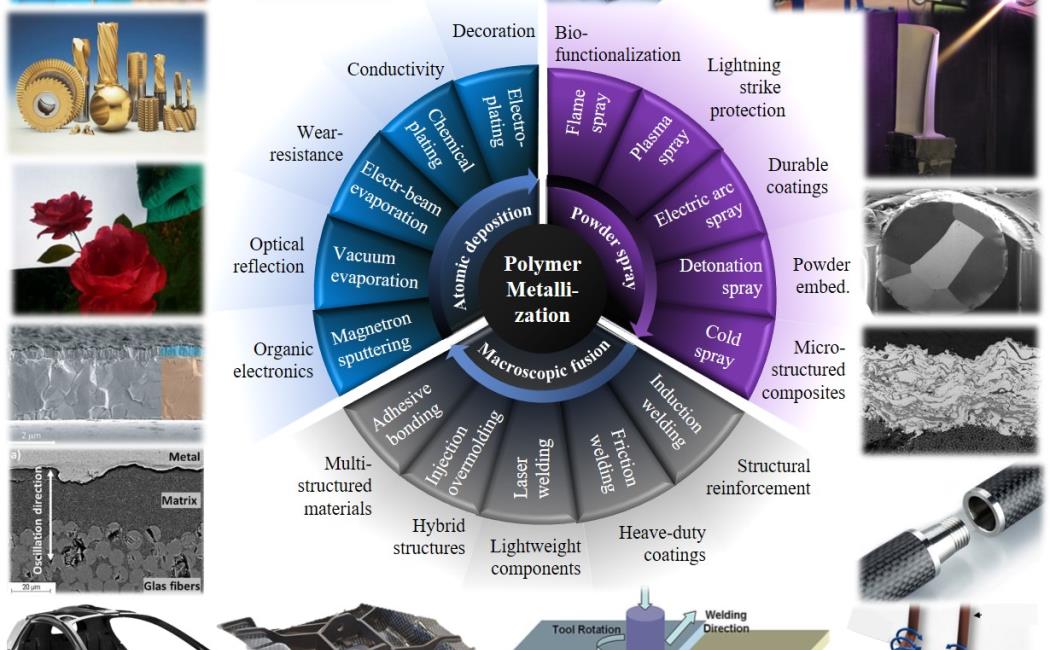


22 July, 2022
Metallization of polymers and composites: State-of-the-art approaches
Ruslan Melentiev, Arief Yudhanto, Ran Tao, Todor Vuchkov, Gilles Lubineau
Materials & Design, Elsevier BV, 2022-07-22
Polymers and their composites are widely used for designing structures in aerospace, automotive, electronic, sport industries due to their lightweight, cost, and processing advantages. However, the surface of polymeric materials typically exhibits intrinsic deficiencies, limiting their durability and functionalities, e.g., low wear resistance, low thermal and electrical conductivity, low adhesion, low bioactivity, low reflectiveness, and weak photochemical resistance. Polymer metallization is an emerging concept that addresses these deficiencies by forming a metallic skin on polymeric surfaces. Herein, the working principles, recent advances, challenges, functional capabilities, and applications of the state-of-the-art polymer metallization methods in the fields of additive manufacturing, coating technologies, and material science are reviewed on nano-, micro-, and macroscales. The polymer metallization methods applied to polymeric and polymer composite substrates are physical vapor deposition, electrochemical plating, a family of thermal spray methods (such as flame spaying, arc spraying, plasma spraying, and cold spraying), and a series of polymer–metal direct bonding methods (such as adhesive bonding, injection overmolding, and fusion joining techniques, including ultrasonic joining, friction spot joining, electromagnetic induction joining, and laser joining). Understanding the key aspects within these approaches would guide scientist and engineers for optimizing the design and durability of structural materials made of polymers/composites.